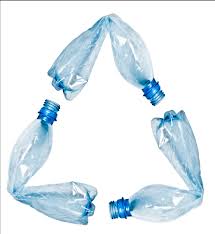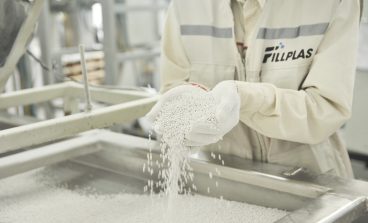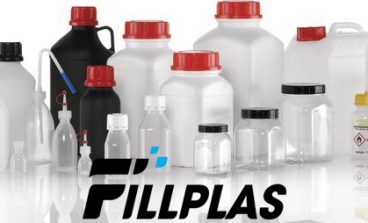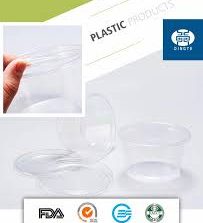
Resource depletion and energy efficiency
In the 1970s, political events and associated dramatic increases in the cost of oil brought public attention to the fact that the amount of petroleum available on this planet is finite. One result was criticism of plastics, on the basis that since they were made of oil, using these materials was diminishing these finite sources of fuel. Evidence soon emerged, however, that not only were plastics a relatively insignificant user of oil (less than 2%); but also that plastics, including packaging materials, were usually more fuel-efficient than alternative materials when the whole life cycle was examined. In particular, the lightweight and easy formability of plastics gave rise to transportation and processing efficiencies that most other materials could not match. Further, it is possible to recover the energy value of the plastics themselves through waste-to-energy incineration at the end of the plastic article’s useful life.
In the area of packaging, often the most competitive packages in terms of energy efficiency are refillable packages. The additional embodied energy in these heavier materials can be more than compensated by the number of use cycles that can be achieved. As long as distribution cycles are not too long. Studies of beverage bottle packaging, for example, found break-even energy costs in the neighborhood of 10 trips when returnable glass bottles were compared to throw-away plastic bottles.
The exact value depends on the size of containers being compared; the distances that must be traveled during bottle return and delivery. It includes recycling rates, recycled content, and a number of other factors.
Therefore, as time went on, the energy-efficient nature of plastics became more well known and appreciated, and criticisms against plastics on resource use grounds diminished.
Pollution from using plastic in packaging
Production of plastics is associated with a variety of types of air and water emissions, and in the U.S. plastics manufacturing facilities, as well as other industries, must comply with a number of strict EPA regulations. Further, there is a relatively constant tightening of the standards, requiring ongoing attention. Many countries around the world have similar regulations.
Air emission regulations
The basis of air emission regulations in the U.S. is the Clean Air Act of 1970 and its subsequent amendments. Water emission regulations are similarly based on the Clean Water Act of 1972 and its amendments. The plastics industry is also impacted by state regulations issued in order to attain the ambient air quality standards imposed by federal requirements. California is a prime example, having emission regulations that are significantly more stringent than those in most other parts of the U.S.
Public pressure
The plastic packaging industry has also been impacted by public pressure. Such as an example is that arising from the Community Right to Know law that requires major industries to report annual emissions to the EPA for public disclosure. Reductions in emissions have also resulted from purely voluntary industry programs designed for minimization of hazardous wastes. Many companies, including some associated with plastics packaging, have found that these programs can lead to monetary savings that increase profits, as well as to a better public image.
One issue that continues to loom, is the “endocrine disrupter” concern about a variety of chlorinated organics, phthalates, styrene compounds, and some other chemicals which are suspected of being hormone mimics or antagonists; and thus of having adverse effects on humans, as well as on a variety of types of animals. This is still a relatively new area of research. And much remains unknown both about what chemical compounds have such activity and about their effects. Therefore, it is very hard to evaluate the eventual impact of these concerns on the plastic packaging industry.
Climate change
Concern that human activity is leading to a change in the planet’s climate, global warming, is an issue that is very likely to become increasingly significant in the next two decades. While there are vocal dissenters, a general consensus has emerged in the community of experts on global climate that increased emissions of greenhouse gases. And especially carbon dioxide, have contributed to an increase in average global temperature over the last 100 years. This increase is expected to accelerate in the next century. The consensus is also that the result will be a wide variety of changes. Examples, some of them favorable, such as lengthened growing cycles in high northern latitudes. But many of them unfavorable, such as a rise in sea level and more frequent droughts and floods.
Greenhouse gas emissions
The longer action to decrease greenhouse gas emissions is delayed, the more severe the ultimate effects will be. For this reason, many countries have agreed to cooperative action to reduce emissions of these gases; even as mandatory targets are being negotiated. There is a general agreement that energy conservation efforts will be a significant part of the overall strategy; since the generation of energy is the largest source of human emissions of carbon dioxide.
The effect on the plastics packaging industry will be interesting to observe.
Carbon dioxide emissions
Plastics packaging is generally more energy-efficient than its competitors. Therefore, in applications where plastic competes with metal or glass, these policies may benefit plastics. Competition with paper is more difficult to evaluate. Paper packaging uses trees as a major part of its energy supply. If, as is the usual practice, new trees are grown to replace those that are harvested. The net effect on greenhouse gas emissions is much less than the total amount of energy used would indicate. Therefore paper and other cellulosic materials, too, may benefit from policies designed to reduce carbon dioxide emissions.
In evaluating potential plastics packaging process modifications, one should remember that saving energy often results in cost savings. Therefore, switching to more energy-efficient systems can be wise economically; as well as benefitting the global environment. In light of the potential for future regulation, it would also be wise to document the energy savings that result; as they may become useful in demonstrating compliance.
Fillplas has eco-friendly environment products, to reduce the pollution issue. Please kindly contact us for more information.



